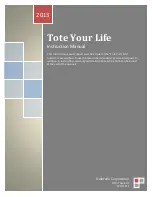
4
MZ-NH700/NHF800
SECTION 1
SERVICING NOTES
The laser diode in the optical pick-up block may suffer electrostatic
break-down because of the potential difference generated by the
charged electrostatic load, etc. on clothing and the human body.
During repair, pay attention to electrostatic break-down and also
use the procedure in the printed matter which is included in the
repair parts.
The flexible board is easily damaged and should be handled with
care.
NOTES ON LASER DIODE EMISSION CHECK
The laser beam on this model is concentrated so as to be focused on
the disc reflective surface by the objective lens in the optical pick-
up block. Therefore, when checking the laser diode emission,
observe from more than 30 cm away from the objective lens.
NOTES ON HANDLING THE OPTICAL PICK-UP
BLOCK OR BASE UNIT
SL894
(OPEN/CLOSE)
– MAIN Board (Conductor Side) –
UNLEADED SOLDER
Boards requiring use of unleaded solder are printed with the lead-
free mark (LF) indicating the solder contains no lead.
(Caution: Some printed circuit boards may not come printed with
the lead free mark due to their particular size)
: LEAD FREE MARK
Unleaded solder has the following characteristics.
•
Unleaded solder melts at a temperature about 40
°
C higher
than ordinary solder.
Ordinary soldering irons can be used but the iron tip has to be
applied to the solder joint for a slightly longer time.
Soldering irons using a temperature regulator should be set to
about 350
°
C.
Caution: The printed pattern (copper foil) may peel away if
the heated tip is applied for too long, so be careful!
•
Strong viscosity
Unleaded solder is more viscou-s (sticky, less prone to flow)
than ordinary solder so use caution not to let solder bridges
occur such as on IC pins, etc.
•
Usable with ordinary solder
It is best to use only unleaded solder but unleaded solder may
also be added to ordinary solder.
Providing the required system environment
The following system environment is required in order to use the SonicStage/MD Simple
Burner software for the MD Walkman.
This software is not supported by the following environments:
•
OSs other than the indicated above
•
Personally constructed PCs or operating systems
•
An environment that is an upgrade of the original manufacturer-installed operating system
•
Multi-boot environment
•
Multi-monitor environment
•
Macintosh
•
We do not ensure trouble-free operation on all computers that satisfy the system requirements.
•
The NTFS format of Windows XP/Windows 2000 Professional can be used only with the standard
(factory) settings.
•
We do not ensure trouble-free operation of the system suspend, sleep, or hibernation function on all
computers.
•
For Windows 2000 Professional users, install Service Pack 3 or later version before using the
software.
System requirements
Computer
IBM PC/AT or Compatible
•
CPU: Pentium II 400 MHz or higher (Pentium III 450 MHz or higher
is recommended.)
•
Hard disk drive space: 200 MB or more (1.5 GB or more is
recommended) (The amount space will vary according to Windows
version and the number of music files stored on the hard disk.)
•
RAM: 64 MB or more (128 MB or more is recommended)
Others
•
CD drive (capable of digital playback by WDM)
•
Sound Board
•
USB port (supports USB (previously USB 1.1))
Operating
System
Factory installed:
Windows XP Media Center Edition 2004/Windows XP Media Center
Edition/Windows XP Professional/Windows XP Home Edition/
Windows 2000 Professional/Windows Millennium Edition/Windows
98 Second Edition
Display
High Color (16bit) or higher, 800
×
600 dots or better (1024
×
768 dots
or better is recommended)
Others
•
Internet access: for Web registration, EMD services and CDDB
•
Windows Media Player (version 7.0 or higher) installed for playing
WMA files
Notes
OPERATION CHECK WHEN THE LID IS OPEN
In making an operation check with the MAIN Board removed from
the set, short the SL894 (OPEN/CLOSE) of the MAIN Board with
the solder before starting the operation check.
Note:
Be sure to remove the solder used for shortcircuit after the repaire
completed.























